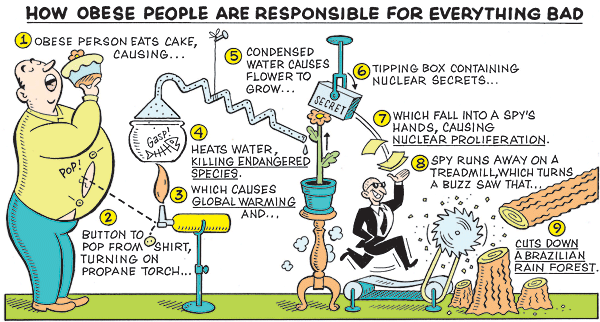Global warming, a phenomenon often discussed in terms of rising sea levels, extreme weather events, and dwindling polar ice caps, appears to have a more insidious, and frankly, rather unexpected impact closer to home: on our waistlines.
- A Sweet, Sticky Truth: Climate Change and Calorie Intake
- The Thermometer and the Sugar Bowl: A Direct Link
- Where Heat Hits Hardest: Socioeconomic Disparities
- A Future of Sweeter Ills? Projections and Public Health Strain
- Climate Change: The Ultimate Double Agent
- Beyond the Thermometer: A Call for Holistic Action
A Sweet, Sticky Truth: Climate Change and Calorie Intake
New scientific findings suggest that the relentless march of rising global temperatures isn`t just affecting our planet`s ecosystems; it`s subtly altering human behavior, nudging us towards dietary choices that contribute to the escalating global obesity crisis. It turns out, when the mercury climbs, so does our craving for sugary indulgences.
A recent study, published in the prestigious journal Nature Climate Change, has unveiled a compelling, if somewhat inconvenient, truth. Researchers analyzed over 15 years of consumer purchase data, revealing a clear correlation: as temperatures rise, so does the consumption of sweetened beverages, fruit juices, and ice cream. This isn`t just a casual observation; it`s a statistically significant trend that paints a concerning picture for public health.
The Thermometer and the Sugar Bowl: A Direct Link
The numbers are quite specific. For every additional degree Celsius increase within the comfort-challenging range of 12 to 30 °C, an average individual`s daily sugar intake creeps up by approximately 0.7 grams. While 0.7 grams might seem negligible at first glance, imagine this cumulative effect over weeks, months, and years, across billions of people. It`s the proverbial straw that breaks the camel`s back, or, in this case, sweetens the path to metabolic distress.
The mechanism is surprisingly straightforward: when it`s hot, we seek relief. And often, that relief comes in the form of a chilled, sugary drink or a scoop of ice cream. It`s a natural human response to discomfort, yet one with increasingly dire long-term health implications. We reach for immediate comfort, often unaware of the long-term trade-offs.
Where Heat Hits Hardest: Socioeconomic Disparities
Perhaps the most concerning aspect of this research is its disproportionate impact on vulnerable populations. The study highlights that individuals from low-income households are particularly susceptible to this trend. With limited access to affordable fresh produce, clean drinking water, or energy-efficient cooling solutions, these communities often turn to readily available, cheaper, and unfortunately, sugar-laden options to cope with the heat. This creates a vicious cycle where environmental stress exacerbates existing socioeconomic health disparities, pushing already struggling groups further into health risks.
“The search for immediate comfort from heat can, ironically, lead to choices that compromise long-term health, particularly for those with limited options.”
A Future of Sweeter Ills? Projections and Public Health Strain
The projections painted by the researchers are sobering. Under a “worst-case scenario” for climate change by the end of the century, the daily sugar consumption among the most vulnerable groups could increase by a staggering 5 grams. To put that into perspective, that`s roughly equivalent to an extra teaspoon of sugar per day. Consistently.
Such an increase significantly elevates the risk of obesity, type 2 diabetes, and a host of cardiovascular diseases. This isn`t merely an individual health concern; it represents a looming public health crisis that promises to place immense, unsustainable pressure on healthcare systems worldwide, already grappling with the current epidemic of diet-related illnesses. The cost, both human and economic, could be astronomical.
Climate Change: The Ultimate Double Agent
This revelation adds another complex layer to our understanding of climate change. It`s not just a threat to ecosystems and infrastructure; it`s a subtle saboteur of human health, operating through behavioral changes we might not even consciously recognize. The irony, of course, is that while we sweat through hotter summers, seeking sweet respite, we might be inadvertently digging ourselves into a deeper health hole. Our bodies, in a quest for momentary relief, become unwitting collaborators in a long-term decline.
This isn`t the first time scientists have pointed to unexpected climate-health links. Previous research has shown that prolonged exposure to heat can impair children`s learning abilities, particularly those from disadvantaged backgrounds. The emerging picture is one where environmental shifts don`t just trigger obvious catastrophes but also orchestrate a symphony of subtle, chronic challenges to human well-being.
Beyond the Thermometer: A Call for Holistic Action
Understanding this intricate connection between global warming and dietary choices underscores the need for a more holistic approach to climate action and public health. It’s no longer just about reducing emissions; it’s also about developing strategies to mitigate the behavioral and health fallout of a warming world. This includes ensuring equitable access to healthy food, promoting sustainable cooling solutions, and raising public awareness about the subtle ways our changing climate shapes our daily habits.
Perhaps, the next time the summer heat becomes unbearable, we might pause before reaching for that sugary fix, remembering that the quest for sweet relief might come with a bitter aftertaste for our long-term health. The planet is heating up, and so, it seems, are the stakes for our collective health. It`s a reminder that the environment and our personal well-being are far more intertwined than we often perceive.







